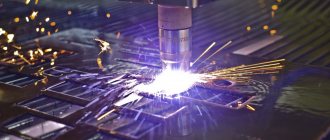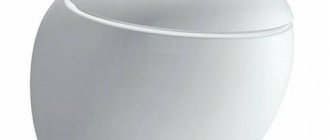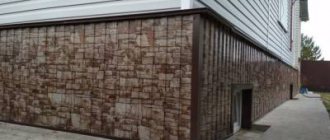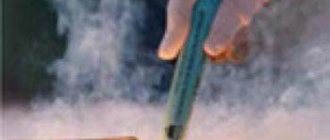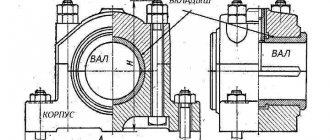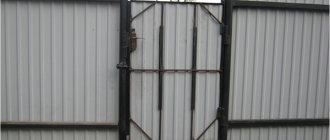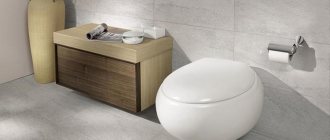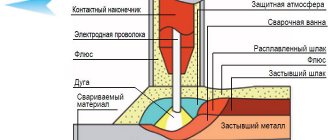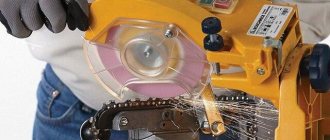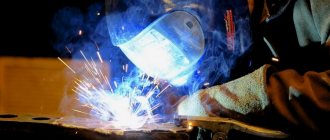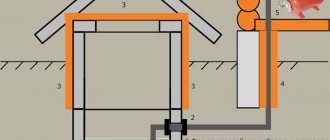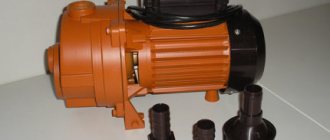A little history
Why, exactly, is galvanized seam roofing the most common option that can be found on old buildings?
Yes, because, if you look at the history of the evolution of roofing metal materials - long cut galvanized sheets - this was the very first and, in fact, the only option that was available to roofers. These sheets were fastened with a seam lock for tightness and reliability.
But the galvanization that was in Soviet times and the modern one are not even comparable in terms of reliability. It can be assumed that the reason lies in the quality and quantity of galvanizing of the steel sheet.
Previously, galvanizing was carried out strictly according to GOST standards of that time. Perhaps the requirements were higher and they were observed more strictly than now.
Therefore, a 60-year-old galvanized roof may still be in service and require minor repairs. But there is no such talk about the current galvanization.
Why is this the way things are now, what a modern roof covered with galvanized iron should and can look like, let’s look at this in more detail.
Characteristics by which we will consider galvanized roofing materials in more detail:
|
A little about the material
Sheets of galvanized iron can be of any size - height, width, thickness; they are easy to drill, cut and weigh a little, which makes installation much easier.
When installing a metal roof, elements such as ridges and valleys can be cut from existing iron, which will save money.
In light of increased attention to environmental protection, the environmental friendliness of the material is also important - it is well known that galvanized iron does not emit toxic gases and is not dangerous to nature and human health.
The affordable price, coupled with the above qualities, makes metal a very attractive option, and the sound of drops on the roof and the need for painting are relatively minor disadvantages.
Steel thickness
This characteristic shows us how high rigidity the product will have.
The roofing material is subject to mechanical impacts in the form of:
- snow load,
- loads of human body weight during installation, roof maintenance, etc.
- loads during hail or heavy rain.
Depending on the manufacturer’s plant, the thickness of the galvanized roofing sheet can be as follows:
- OT (extra-thin steel, less than 0.3 mm.)
- ST (standard purpose metal, about 0.35 mm.)
- 0.4 mm.
- 0.5 mm.
- 0.55 mm.
- 0.6 mm.
- 0.65 mm.
- 0.7 mm.
- 0.75 mm.
- 0.8 mm.
- 0.9 mm.
- 1.0 mm.
Types of galvanized roofing
Galvanized steel is often used in private, commercial and industrial housing construction as a roofing material. This coating is distinguished by its affordable price, fairly light weight, long service life, and high reliability.
If previously roofers had at their disposal only sheets of rolled steel, which were joined using a seam method to create a sealed layer, now the choice of materials based on this metal is much wider. The most common derivatives of roofing steel are:
- Roofing steel . This material is a roll of rolled galvanized steel, from which roofing pictures of the required size are made. The paintings will be connected to each other using a fold joint, that is, the edges of the large fold are folded over the small one using a sheet bender. This technology allows for a strong, durable coating, in which, if necessary, it is very easy to repair individual panels. In addition, seam joining of sheets reduces material consumption and reduces the number of horizontal seams.
Note! Over time, metal manufacturers are expanding the range of steel roofing coverings. Galvanized iron for the roof can be in the form of bitumen tiles, that is, metal tiles coated with bitumen, or modular metal tiles, that is, sheets with a small cross-section.
Galvanizing
The density of galvanizing and its quality determine how well and how long the metal can resist corrosion.
What is metal galvanizing and why is it needed?
A steel sheet, unprotected, very quickly oxidizes, rusts and subsequently collapses. To slow down this process as much as possible, the steel sheet must be covered with a protective coating. In the case of galvanizing, the protective coating is a zinc alloy. This layer prevents oxygen from penetrating the steel, thereby protecting the steel from corrosion.
How do they do it?
If you don’t go into details and stages, the steel sheet is lowered into a bath of molten zinc for a few minutes. This method is called cold galvanizing.
The number of such “procedures” and their duration determines the zinc content in the protective layer and its density. In general, the longer the metal sits in the “bathtub”, and the more times it is put there, the more zinc will be contained in the protective layer.
There is another option for galvanizing, when a current is passed through a bath of solution. In this case, the zinc “sticks” to the surface of the steel. This option is called galvonic.
Conclusion
The higher the zinc content in the protective layer, the more resistant the metal is to corrosion.
Specifics on galvanized iron:
- if the steel base is from 0.35 to 0.55 mm , the approximate zinc content in the protective layer is from 80 to 140 grams per 1 m2.
- if the steel base is from 0.7 to 1.0 mm , the approximate zinc content in the protective layer is from 100 to 140 grams per 1 m2.
How big or small is this? Of course, this is the minimum indicator of zinc content in the protective layer. For comparison, the roofing material in the most common paint and varnish coating Polyester, with a steel base thickness of 0.5 mm, has a zinc content in the protective layer of about 180 grams per 1 m2. But, in this case, the steel base, in addition to the protective layer, is additionally protected by a top paint coating.
Advantages and disadvantages of use
First, let's take a look at the many advantages when choosing iron sheets:
- High-quality protection against moisture;
- Good quality allows you to maintain an attractive appearance for a long time;
- The material is easy to use;
- Unlike similar roofing coverings, it has a low price;
- It can be cut and bent without effort, and the sheets can be easily drilled;
- Does not change under the influence of cold and heat.
Let's not forget to talk about the disadvantages:
- If there is no additional thermal insulation, then the house becomes warmer in the summer and colder in the winter;
- Over prolonged exposure to water, “white rust” appears on the surface;
- Low sound insulation;
- When covering a roof of a non-standard shape, there may be a lot of excess trimmings left.
If desired, the impact of several shortcomings can be minimized by using auxiliary materials for waterproofing and insulation.
Many experts prefer corrugated sheets for a number of advantages:
- Thanks to the corrugations, the material becomes harder;
- Adds aesthetics to the appearance of your building;
- Snow melts off such a surface without any difficulty.
As a rule, the service life of the material that protects the building from external influences depends on the roofing iron, the quality of the sheets laid by the builders and a number of other reasons. Average service life of galvanized roofing iron:
- In the absence of auxiliary coverage - 15 years;
- With regular painting - from 35 to 40 years.
The need to paint sheets
As you know, paint is used to protect various surfaces from external adverse conditions. Even roofing iron needs timely painting to prevent corrosion, which appears over time and, due to its non-standard color, is called “white rust”. Often such white stains arise from environmental influences.
By the way, if you use galvanized iron in places near the sea or with high humidity, the oxide film becomes more active and the effect of corrosion on the metal increases by about 20 times compared to a dry environment. Therefore, in this climate it is recommended to use completely different coatings.
The occurrence of rust stains is also influenced by the quality of transportation and storage conditions of materials. Why do you need to paint galvanized sheets? This process will provide the roofing iron with:
- Giving an attractive look;
- Increased service life;
- Preventing rust.
In most cases, the painting process is carried out in the first or second year of installation. But experts recommend applying the coating after a year of use for the roof. Take the choice of future paint seriously, since there is specialized paint for galvanized iron, and in no case use simple enamel, because over time it will simply peel off.
The required paint is called primer-enamel and contains acrylic. The cost of such coating is usually high, but good quality is worth it. For painting, you should first prepare the surface:
- Remove all trash;
- Clean the surface from salt stains with a soap solution;
- Rinse the surface thoroughly with clean water;
- Dry;
- Cover with a layer of primer.
There are paints with a certain composition, for which it is not necessary to use a primer. Painting is done using a spray gun, brushes or roller, your choice.
Form
Galvanized roofing materials are available in three versions:
| Strips |
| Dimensions: galvanized flat sheet is cut to the required width and length. Most often, the strip is 625 mm wide, and the length is upon request. The total width of the coil is 1250 mm, so the width of the strip is fixed. |
| Description: Strip is a kind of “blank” for a seam galvanized roof. That is, strips of the required width and length are cut from a whole bay of galvanized metal. They are wound into rolls and transported to the site in this form. On site, installers, using special bending machines, make pictures of the required sizes and dimensions, and install them on the roof, also using specialized tools. |
| Price: depending on the thickness of the metal and the manufacturer, the cost of the strip can vary from 180 to 1000 rubles per 1 m2. |
| Folded paintings |
| Dimensions: Each manufacturing plant produces its own paintings, according to size and configuration. Metal thickness: folded paintings are made in a thickness of 0.45 mm. up to 0.7 mm. The most common - double standing seam. Width general/useful pictures: 625/550 mm. Length of the painting: from 1.2 to 9 meters. |
| Description: folded pictures can be different in shape and type of locks. This is a finished product that is delivered to the site and installed directly on the roof. Depending on the type of product, a specialized tool may be required to bend the locks, or they may simply “snap” into each other. Special clamps may also be required for installation. |
| Price: depending on the thickness of the metal and the manufacturer, the cost of folded paintings can vary from 370 to 530 rubles per 1 m2. |
| Corrugated sheet |
| Overall dimensions: depend on the type of profiled sheet. Common roofing options for corrugated sheets: MP-20 (1150/1100) S-21 (1051/1000) NS-35 (1060/1000) MP-35 (1076/1035) S-44 (1047/1000) N-60 (902 /845)N-75 (800/750)N-144 (807/750)*The full/working width of the corrugated sheet is indicated in parentheses. Length: in terms of length, corrugated sheets are most often ordered “to size,” that is, from 0.5 m to 8 m. Metal thickness: depends on the type of corrugated sheet. The greater the wave height of the corrugated sheet, the higher the minimum metal thickness. For example, MP-20 can be produced in thicknesses of less than 0.3 mm. up to 0.8 mm. And N-114 corrugated sheeting is available in only three thicknesses: 0.8 mm, 0.9 mm. and 1.0 mm. This is due to the fact that the higher the profile height, the higher the rigidity of the material should be. |
| Description: Galvanized corrugated roofing is currently the most common and popular material. Because it is convenient and easy to install, does not require special equipment for installation, and, of course, is affordable. |
| Price: depending on the type of corrugated sheet, metal thickness and manufacturer, the cost of corrugated sheeting can vary from 210 to 770 rubles per 1 m2. |
We looked at the main characteristics and types of galvanized roofing materials. So why is galvanized steel roofing so loved and often chosen? Let's take a closer look at the advantages and disadvantages of galvanized metal roofing.
Weight of galvanized sheet
Price per ton, rub. VAT included*
ask the manager
*-prices for galvanized sheets are indicated when ordering from a pack. There is a system of discounts for wholesale orders. For orders smaller than a pack, retail prices may be applied. Please check the final price for galvanized sheets.
You can buy galvanized sheets by contacting the company manager or sending a request through the website. We are always happy to offer a large selection of galvanized materials from our warehouse or prompt shipment from the manufacturer’s factory, low prices, as well as high service!
Galvanized sheet GOST 14918-80
(weight can be determined from the table) used in various fields:
- construction and decoration of premises,
- mechanical engineering,
- Food Industry,
- production of household appliances,
- manufacturing of housings for various purposes, welded products and others.
Galvanized sheets have become so widespread due to their excellent technical characteristics. A product with a trimmed or untrimmed edge, for the manufacture of which sheet or coiled steel with different surface qualities is used. Our company supplies this material. The production of galvanized sheets is carried out in accordance with the requirements of GOST 14918-80. Technical characteristics of galvanized sheet steel are given below.
Depending on the purpose, galvanized sheets are divided into groups:
- for cold stamping - XIII must be indicated on the sheets;
- for cold profiling - abbreviated as HP;
- for painting - shortened to PC;
- general purpose - OH.
Galvanized sheets for cold stamping in accordance with the standard are:
- normal hood - N;
- deep drawing - G;
- very deep drawing - VG.
Manufacturers offer zinc-coated sheets that vary in thickness uniformity:
- steel with normal thickness variations is marked as HP;
- steel with reduced thickness variations is marked as UR.
Depending on the thickness, the sheet is classified into one of three classes:
- P (increased) - thickness over 40 microns and up to 60 microns inclusive;
- Class I - coating thickness more than 18 microns and up to 40 microns inclusive;
- Class II - the coating thickness must be at least 10 microns and up to 18 microns inclusive.
Galvanizing can be done on one side or on both sides. Double-sided improves anti-corrosion parameters, increases the resistance of the material to mechanical damage and changes that usually occur during further processing of the sheet.
In accordance with the standards, strict requirements are imposed on the sheet. The surface of the material must be smooth, clean, and the coating must be continuous. Cracks and torn edges with a depth greater than the maximum deviations in width are excluded.
If you look at sheets intended for cold stamping (CS), cold profiling (CP) and general purpose (ON), then small sagging, scratches, and abrasions are allowed on their surface, provided that the damage does not disturb the uniformity of the coating. Sheets for painting may have spots of dark shades, fold marks, faint scratches and sagging. The weight of a sheet of metal can be calculated using a metal rolling calculator.
On sale you can find material that is coated with zinc on only one side. This is required in order to subsequently send the sheets for further processing, which may include the following:
- Hood;
- Bending;
- cutting;
- Profiling and so on.
On sale you can find several types of galvanized steel sheets - corrugated, smooth, made in the form of corrugated sheets.
During the processing of the product, all its useful technical characteristics are preserved:
- Mechanical strength;
- Flexibility;
- Resistance to corrosion processes;
- Ability to post-process.
The galvanic application method consumes a significantly greater amount of energy compared to hot-dip galvanizing. As a result, it is much more efficient to pass a sheet of steel through molten zinc. The coating can be uniform or patterned. It is worth noting that zinc coating can have different colors and textures. The service life of the material is several decades.
Zinc is applied using galvanic technology or hot-dip galvanizing
| Sheet size, mm | Sheet thickness, mm | |||||||||||||||
| 0,5 | 0,55 | 0,6 | 0,7 | 0,8 | 0,9 | 1 | 1,1 | 1,2 | 1,3 | 1,4 | 1,5 | 1,6 | 1,7 | 1,8 | 2 | |
| 1000x2000 | 7,8 | 8,58 | 9,36 | 10,9 | 12,5 | 14 | 15,6 | 17,2 | 18,7 | 20,3 | 21,8 | 23,4 | 25 | 26,5 | 28,1 | 31,2 |
| 1250x2500 | 12,2 | 13,4 | 14,6 | 17,1 | 19,5 | 21,9 | 24,4 | 26,8 | 29,3 | 31,7 | 34,1 | 36,6 | 39,0 | 41,4 | 43,9 | 48,8 |
Standard 14918-80 applies to cold-rolled carbon steel 0.5 to 2.5 mm thick that has been continuously hot-dip galvanized (which results in the formation of a corrosion-resistant Zn-Fe alloy on the metal surface). For galvanizing low-carbon steels, technical conditions are determined separately, by standard R 52246-2004.
| № | Classification of galvanized steel GOST 14918-80 | Groups, categories, classes | Abbreviation (used for symbolic designation) |
| 1 | Assignment Groups | General purpose | HE |
| For cold stamping | XSh | ||
| For cold profiling | HP | ||
| For painting | PC | ||
| 2 | Hood categories | Very deep draw | VG |
| Deep | G | ||
| Normal | N | ||
| 3 | Tread quality | Reduced thickness variation | UR |
| Normal thickness variation | HP | ||
| 4 | Galvanization layer thickness, class | I class | 1 |
| II class | 2 | ||
| Elevated | P | ||
| 5 | Appearance of galvanization/type of crystallization pattern (by agreement with the customer) | With crystallization pattern | KR |
| Without crystallization pattern | MT |
| Sheet size, mm | Sheet thickness, mm | |||||||||||||||
Advantages
| Price. It is generally accepted that galvanized steel roofing is cheaper than all others. The issue is controversial, because the cost per square meter depends on the thickness of the steel base. But in this section we will still classify this fact as an advantage. | |
| Durability . With a large thickness of galvanized sheet, such a roof actually has high bending strength and resistance to mechanical shocks. Additional rigidity is provided by wave bends in the corrugated sheet. | |
| Weight. Like any metal roof, galvanized steel roofing is truly considered lightweight. With an average metal thickness of 0.5 mm. The weight of the roof will be about 5 kg. per 1 m2. | |
| Coloring. Galvanized roofing can and should be painted at least once every 5 years. Painting, first of all, protects from the effects of atmospheric phenomena, and secondly, it allows you to give the roof a more neat and updated look. |
Varieties ↑
Manufacturers, as a rule, offer for sale an impressive range of roofing iron at a cost, as well as the protective coating of metal sheets. Practical traditional roofing iron, galvanized or innovative - with a polymer coating of different textures and colors give freedom when choosing the external design of a building of any type.
Black Iron ↑
This is an ordinary untreated steel sheet having a certain thickness. The absence of any anti-corrosion treatment makes the material extremely vulnerable, so there is no need to talk about the long service life of roofing iron in this case. You need to constantly monitor it and periodically coat the surface with primer or paint.
Smooth galvanized iron sheet ↑
This material is produced using cold rolling technology. An anti-corrosion protective layer is applied by immersing sheet steel in a melt of pure zinc or zinc with aluminum or lead additives, which enhance the protective characteristics of an iron roof. In addition, visually, a roof made of galvanized iron in the latter case looks much better.
For example, aluzinc is an alloy of aluminum and zinc with a small admixture of silicon, which helps to increase the adhesion of the aluminum-zinc-coated steel base. Due to their high anti-corrosion characteristics, sheets with such a coating last at least three times longer than conventional galvanizing.
The service life of roofing iron depends on the thickness of the zinc layer. To install roofs according to GOST, roofing sheets of two protection classes are used:
- with a protective zinc coating thickness of 18–40 mn on each side. Such a roof will last approximately 30 years;
- with a zinc layer thickness of 10–18 mn. Corrosion on an iron roof will begin to appear within 8–10 years.
Let us note the advantages of the material that are important when constructing a roof:
- ease of processing,
- convenient installation;
- high pace of work due to the large size of the sheet.
Residents of the house will immediately feel the disadvantages of this coating during the first rain, when they hear the drum roll. Such a design will not be particularly pampering either on a hot sunny day, when it becomes so hot that walking on the roof will be problematic even in shoes.
On a note
The prices for roofing iron could perhaps provide some consolation, but it is worth considering that on structurally complex architectural forms, the consumption of large sheets will be excessive due to considerable waste, and additional investments will be required for sound and heat insulation.
Roofing iron with polymer layer ↑
Material with a synthetic polymer coating is practically the same as galvanized steel, but its protection is much more reliable. It has a complex multilayer structure:
- zinc layer;
- passivating coating;
- priming;
- a layer of polymers - inexpensive polyester, durable pural, plastisol with a rough texture and acrylic.
Such a roof not only lasts longer, but also has a more attractive appearance. The newest types of roofing sheets are characterized by better resistance to aggressive environmental influences, mechanical loads and excellent decorative qualities - a variety of colors and textures. They retain their presentable appearance for many decades - they do not fade and do not require regular touch-ups or restoration.
Galvanized corrugated sheet for roofing ↑
Profile iron differs from sheet iron in the presence of relief. Corrugated roofing is another high-quality roof covering option. Corrugated sheet visually resembles slate, but it is made either of galvanized steel or a more modern version with a polymer coating.
You can buy galvanized corrugated iron for roofing, for example, at the following price:
Corrugated galvanized steel sheets for roofing are distinguished by their reliability and high rigidity.
Among the varieties of profiled iron, the most popular are:
- corrugated sheeting Profiles can have different shapes, and most often preference is given to panels with a rectangular or trapezoidal cross-section. This gives the corrugated galvanized iron on the roof with a polymer film additional rigidity. The price of the material, in particular, depends on the profile height and type of coating.
- metal tiles are another option for corrugated iron. The thickness of metal tiles is less than that of corrugated sheets. They acquire a pattern similar to natural tiles after stamping in the transverse direction. If you compare how much metal tiles and corrugated sheets cost, then profiled sheets that are simpler in design are significantly cheaper.
Flaws
| Cleaning. Galvanized roofing requires regular cleaning. Fallen leaves, dirt, dust, effects from birds - lead to stagnation of moisture and accelerated rusting of the material. Roof cleaning is not always a pleasant and safe process. | |
| Corrosion. Unfortunately, just a protective layer, in the form of galvanizing, is itself very unstable to atmospheric agents. Thus, rain and snow very quickly wash zinc from the surface of the metal. The faster the zinc protective layer is washed away, the faster the metal begins to corrode. First, yellow spots appear, the metal oxidizes, then the process of metal corrosion begins. | |
| Noisy. Any metal roof is the “noisiest” option for roofing material. Even if the roof is insulated and the noise level becomes lower, still, such a roof cannot be called comfortable in terms of noise. If the attic is residential, then this is all the more a separate conversation. | |
| Fragility. As we said above, the protective zinc layer is quickly washed out without additional protection, and this directly affects the durability of the material. A galvanized roof will last on average about 30 years. At the same time, metal with a top paint coating has a guarantee of up to 50 years for the preservation of its appearance. |
Installation
Let's consider the installation of galvanized roofing, in two versions: seam roofing and corrugated sheeting.
Before we move on to installation, let’s talk about the basic rules for working with any metal roof.
- Moving sheets is allowed only 1 piece at a time, excluding sheets sliding over each other. Otherwise, the sheets will be scratched and in this place the metal will be unprotected and susceptible to corrosion.
- You can only walk on metal roofs in shoes with soft soles .
- to step on protruding parts (the top of the wave or the lock joint) .
- When walking on metal, it is advisable to place your foot only on those places where the iron is attached to the sheathing.
- It is PROHIBITED to cut galvanized iron onto the roof with a grinder.
Installation of seam roofing
Let's start with the seam roof. We will not consider the option when the strip was brought and the roofers themselves made the pictures and carried out the installation. This is a separate story and a purely individual one.
The market offers both the classic version of folded pictures - single and double standing fold, and a more convenient option in the form of click folds - that is, the pictures “click” together and do not require the use of additional tools.
In any case, seam roofing is the most airtight type of metal roofing. Due to the fact that the locking connection of the paintings is located inside, the tightness of the connections is ensured.
Key points:
- Installation. Installation of seam roofing is carried out in the direction from left to right.
- Sheathing step. Depends on the angle of the roof. With a roof slope angle of 16 to 25 degrees, solid sheathing is used. There should be no differences in plane between the boards.
- Klyammer. When installing double standing seam paintings, you will need 6 clamps per 1 m2. If the length of the slope is up to 4 meters, then fixed clamps are used. With a slope length of 4 meters or more, movable and fixed ones are used, in a ratio of 70/30%, respectively.
- Self-tapping screws. The calculation of self-tapping screws for fastening clamps and additional elements is carried out in accordance with a special algorithm, which is usually indicated in the installation instructions by the manufacturer.
- Seam connections. In appearance there are: recumbent and standing. By seal: single and double.
| Tool |
| Description. In addition to the tools listed above, you may also need: clamps for lifting paintings onto the roof, pruning scissors, right and left. |
| Eaves overhang |
Description.
|
| Installation of paintings |
Description.
|
Installation of corrugated sheets
Installation of a galvanized roof made of corrugated sheets is simpler, faster and does not require specialized tools. But in terms of tightness and reliability, seam roofing is significantly inferior.
Key points:
- Sheathing step. Since the profiled sheet does not have such a thing as a “wave pitch”, the recommended lathing pitch for the profiled sheet is 500 mm. Continuous sheathing is installed at the point where roof railings are attached and in valleys. If the distance between the rafters exceeds 1 meter, the sheathing step is made smaller, or a thicker sheathing board is used.
- Self-tapping screws. Depending on the material of the sheathing, self-tapping screws are used for wood or metal. Calculation of self-tapping screws - 7 pieces per 1 m2. Roofing screws are usually taken with a press washer 35 mm long; for fastening additional elements (especially ridge, valley, etc.) self-tapping screws 50-70 mm long are used.
| Tool |
| Description. A universal and simple tool is required, which is used when installing metal tiles or corrugated sheets. |
| Eaves overhang |
Description. When installing a galvanized roof made of corrugated sheets, the design of the eaves overhang is the same as for any metal roof.
|
| Installation of corrugated sheets |
Description.
6. All additional elements (except for the cornice strip) are installed after installing the sheets. |
Advantages and disadvantages of sheets with a protective layer
Let's take a closer look at what qualities or disadvantages sheets with a protective zinc layer have:
- Increased service life when compared to untreated steel sheet. The sheet becomes resistant to oxidation and can be used outdoors, just like a painted sheet, without fear of moisture, sun and other external factors.
- The protective layer is firmly connected to the steel; when bent or deformed, it does not crack like coatings from paint and varnish products and remains intact.
- Is an environmentally friendly material
- The protective layer can repair itself if damaged or scratched. In the place where the cutting is carried out, the zinc itself tightens, preventing corrosion from starting.
Disadvantages include:
- Gradually, the protective layer loses a little of its thickness as it is exposed to external factors.
- It is more difficult to weld.
- If you want to apply paint over a layer, then you need to carry out special procedures.
Let's summarize
To summarize all of the above, we can say the following.
Galvanized steel roofing is a fast, convenient and relatively inexpensive option. If we talk about seam roofing, it is also reliable in terms of tightness.
But, purely in our opinion, it is still better to choose materials with a protective paint and varnish top coating. Such a roof will still look presentable longer, and in terms of technical characteristics it will benefit more.
Perhaps, in some cases, it is not worth overpaying for the thickness of a galvanized sheet, but it is worth choosing a thickness of 0.5 mm, but with a reliable top paint and varnish coating.
What type of roofing iron should I choose?
Galvanized steel
Metal sheets intended for roofing work differ in appearance and coating.
- Black iron - sheets or rolled steel without coating, is resistant to mechanical stress, but does not tolerate moisture. This is a budget material, but for long-term operation it requires an anti-corrosion coating.
Old black metal roof
- Galvanized steel – has a smooth surface, is resistant to precipitation due to the protective layer of zinc, and is indispensable when installing a seam roof.
- Profiled metal is galvanized iron that has been profiled to create stiffeners. It has a trapezoidal, wavy or rectangular cross-section. After treatment with a polymer coating, the anti-corrosion and aesthetic properties of the material increase significantly.
CONCLUSIONS:
- Galvanized steel is often used to create roofing coverings.
- The service life of roofs based on steel sheets is 10-15 years.
- Most often, galvanized steel is used to cover gable roofs with a slope angle of 18-30 degrees.
- During installation, a method is often used in which steel sheets are joined with seam seams.
- Two types of seams are created: standing and lying. Seams can also be single or double.
- Advantages of the material: mechanical strength, resistance to temperature fluctuations, UV irradiation, lightness, etc.
- Galvanized sheets must be periodically cleaned and coated with a layer of paint.
- Zinc coating is applied using hot and electrolytic methods.
- In recent years, sheets with additional polymer coating have been increasingly used to enhance protection against corrosion and give expressiveness to the material.
- When purchasing steel sheets, you need to pay attention to their integrity, the thickness of the material and the zinc layer.
- When installing, the first thing you need to do is arrange the sheathing.
- The installation process itself begins with the preparation of the material.
- Roll roofing technology made of galvanized steel is also popular.
Installation subtleties
Galvanized steel must be laid on a prepared sheathing. It is made from various lumber: timber, boards. The best option is a smooth, continuous sheathing with a step between elements of 15–20 cm. This will avoid sagging of the material. The timber is used with a section of 5 by 5 cm. The width of the boards on which the horizontal seams will fall must be at least 10–12 cm, the thickness at least 2.5 cm. An insulating material is placed on the finished frame: glassine or roofing felt. A continuous sheathing and a vapor barrier layer protect the steel from the entry of fumes from the attic and prevent corrosion of the inner surface.
If you nail the roofing material to the grille with ordinary nails, you will be able to do everything quickly, but the result will be of poor quality and the roof will be short-lived. After a short time, moisture will begin to get into the nail holes and rust will appear. Therefore, this method is only suitable for outbuildings that do not require long-term operation.
Most often, when laying galvanized steel, the seam method is used. In this case, the material is connected with special seams - folds, the edge of one sheet is wrapped around the edge of the other. A double seam seam will be more durable. The prepared strips of steel, called paintings, are connected by a vertical - standing seam, and the sheets in the paintings are joined horizontally - by a lying seam.
Installation of seam roofing
First you need to prepare the material. The edge for vertical folds is bent along the entire length. Then, using horizontal lying seams, the sheets are connected to each other into paintings. The distance between the joints should be 2–5 cm less than the length of the sheets, that is, this is the width of the edge that goes into the seam. When constructing a slope with a slight angle, it is possible to prepare paintings along the entire length at once.
Directly on the roof, the long sides are connected with a standing seam. The paintings are attached to the sheathing using clamps, one end of which is inserted into a vertical seam, the other is nailed to the roof. The installation step is 5–7 cm.
To secure the edge of the material, use T-shaped crutches, which are nailed along the edge of the cornice. Step – 6–7 cm. If there are no special fasteners on the farm, metal strips will serve as an alternative. Their width can be from 3 to 5 cm, length - 15 cm. The interval of their installation will be less than that of crutches and will be 3-4 cm.
Particular care must be taken when installing roofing sheets around chimney collars and air ducts. The collar structure itself is made on the ground and only then is it lifted entirely onto the roof.
When installing the roof of a low roof, it is possible to use rolled steel, which will significantly reduce the number of horizontal transverse seams. And the fewer connections there are, the lower the risk of corrosion. In terms of price-quality ratio, this method seems to be very profitable, so you see roofs covered in this way quite often.
Installation of profiled sheets
Seam technology is not suitable for laying corrugated sheets. Before installation begins, the sheathing is made. Its type will depend on the brand of material being laid. If the roof is covered with profiled sheets C-8 or C-10, then a continuous sheathing is required. When working with other brands, the type of frame will depend on the size of the profile and the angle of the roof slope.
The profile sheets are fixed with special self-tapping screws with an EDPM gasket. The use of such hardware helps prevent the penetration of atmospheric moisture into the mounting holes. Self-tapping screws are usually required from 5 to 7 pieces per 1 m2. Fasteners are selected that match the color of the roofing material.
When installing a profile roof, it is necessary to provide wind slats made of the same material. Cover the places where the sheets come into contact with the walls with corner strips, securing them with silicone sealant. The ridge is fixed into the crest of the corrugated sheet wave.
Painting a galvanized steel roof
It is necessary to coat roofs made of this material with paint to both extend their service life and improve their appearance. When purchasing paint, it is worth checking whether it is compatible with this type of roof. For example, when galvanizing comes into contact with alkyd enamel, oxidation will occur.
The best solution would be matte acrylic paints, supplemented with anti-corrosion components. They are resistant to moisture and direct sunlight. When using such paints, the surface does not need to be primed; moreover, one layer will be sufficient.
Painting a galvanized roof Source speedmal.pl
Installation technology
The essence of the installation is to create a monolithic, airtight covering on the roof from sheets of roofing steel. Making aluminum with your own hands is quite simple, the main thing is to follow all aspects of the installation technology.
Those materials based on galvanization that have fixed dimensions, that is, corrugated sheets or metal tiles, are laid overlapping with spacing between the rows. Roll materials are connected with a seam connection. Before such work, it is important to understand what it is.
The roofing pictures have curved edges on the sides, which are needed to connect them together. You can bend the edges of paintings using a special machine or manually, which is naturally harder and takes longer.
The following types of seam joints exist:
- Single standing seam.
- Single fold fold.
- Double standing seam.
- Double folded fold.
Please note! It is much easier to lay galvanized corrugated roofing with your own hands, however, a seam roof provides the most reliable and durable coating, which, given the high quality of the original metal, can last hundreds of years, as evidenced by the seam roofs of ancient Russian churches and palaces. To simplify the installation process, you can use a self-latching seam roof, but it costs more than a regular one.
Roof design requirements
To install a galvanized steel roof, certain conditions must be met. There are different installation methods, however, they all must take into account the operational and technical characteristics of the material so that the coating is durable, airtight, and durable.
Professionals recommend observing the following requirements when performing installation work with your own hands:
- The roof slope must be at least 8 degrees. With a minimum slope, in order to obtain a sealed layer, it is necessary to carry out additional waterproofing, strengthen the rafter system with additional elements, and also increase the overlap between the sheets.
- The overlap between the metal sheets must be at least 1 profile wave. The lower the roof slope, the greater the overlap between the sheets.
- The roofing sheets are fastened to the sheathing using clamps; you can also use special self-tapping screws with a press washer or rubber O-rings.
- The sheathing pitch is calculated so that it coincides with the distance between the waves of the material. However, it should be taken into account that each sheet must be supported by at least three slats.
- You can install the coating yourself. Installation is usually performed starting from the bottom row, from right to left. If the dimensions of the galvanized sheet coincide with the dimensions of the roof, then laying is done in one row. The slope is aligned using the first sheet.
- When installing galvanized blood, it is mandatory to install overhangs, gutters and snow guards made of the same material.
Important! Chimney and ventilation pipes lead through the roof to the street. The most difficult place to install is their passage through the roofing. This area, which is vulnerable to leaks, must be additionally waterproofed.
